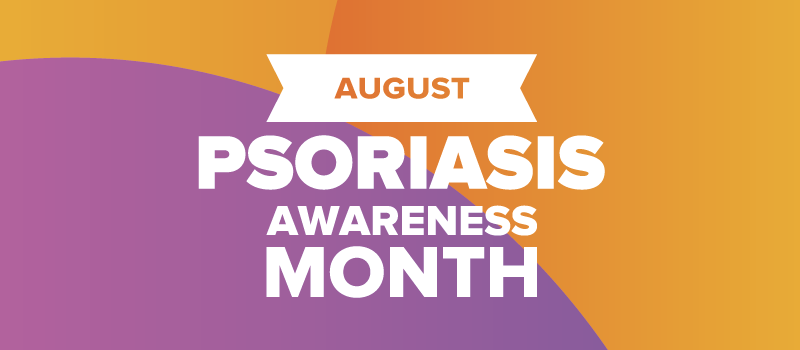What’s the Buzz
The Bee Healthy Blog
Tacrolimus Ointment for Vitiligo: Uses & Side Effects

Vitiligo is a chronic autoimmune condition in which milky white patches develop in the skin due to loss of pigment. The autoimmune theory speculates that people with vitiligo form autoantibodies to melanocytes and melanin precursors. This means their body’s immune system mistakenly attacks healthy cells that make melanin pigment in the skin. In other words, the immune system attacks the healthy cells that give the skin its color. Vitiligo patches may sometimes cause poor self-esteem and affect quality of life. Patients with vitiligo are at an increased risk of other autoimmune diseases such as thyroid autoimmune disorders, psoriasis, and rheumatoid arthritis.
There is no cure for vitiligo lesions, but treatments can help to stop the patches from getting bigger, prevent new patches from forming, and restore a more even skin tone.
Please continue reading to find out whether topical treatment with tacrolimus ointment (brand name Protopic) is effective for vitiligo.
What are the options for treating vitiligo patients?
Medications used for the treatment of vitiligo include:
- Potent topical corticosteroids, such as clobetasol, hydrocortisone, betamethasone, and triamcinolone. They can be used in both children and adults. Corticosteroids work best on those with recently developed vitiligo lesions. However, topical steroids can only be used for short periods of time. Topical steroids, when being used as directed for a short time, are generally effective for adults and children.
- Topical immunomodulators (topical calcineurin inhibitors) such as topical tacrolimus ointment (Protopic) and topical pimecrolimus cream (Elidel). These topical treatments can be used in children and adult patients for longer periods of time compared to corticosteroids. They are most effective in treating vitiligo in the head and neck areas.
- Synthetic vitamin D3 derivatives such as calcipotriene (Dovonex). This medication should be used in combination with topical steroids to speed up the restoration of skin color in children and adults. Calcipotriene is not typically as effective as monotherapy.
- Janus kinase (JAK) inhibitors such as ruxolitinib (Opzelura). This is an FDA-approved drug that is used to restore skin color in small areas of skin in people aged 12 years and above who have non-segmental vitiligo. This medication should only be used to treat a small area of the body.
Vitiligo usually spreads slowly. However, it can spread quickly sometimes. In these cases, oral corticosteroids such as prednisone can be prescribed to slow down the progression of vitiligo.
Other treatment options include light therapy (phototherapy), Excimer laser treatment, skin grafts, and cell transplants.
It is worth noting that successful treatment of vitiligo takes time. Many vitiligo patients use camouflage makeup, tanners, and skin dyes to even out their skin tone until other treatments produce results.
Additionally, some patients with vitiligo take dietary supplements to help restore their natural skin color. Further studies are needed to say whether supplements can be an effective treatment for vitiligo.
Rarely, vitiligo patients who have lost most of the color from their skin may use depigmentation creams to remove the remaining natural color for complete depigmentation and a more even skin tone.
What are the other uses of tacrolimus treatment?
Tacrolimus is used for short-term, non-continuous chronic treatment of atopic dermatitis. Topical tacrolimus 0.1% and 0.03% is a second-line therapy for moderate to severe atopic dermatitis (eczema) in non-immunocompromised pediatric and adult patients who have not responded well to other topical medications. Atopic dermatitis is a skin condition associated with dry, red, itchy, and inflamed skin. Tacrolimus 0.1 ointment is approved to be used in adults and children 16 years and older only, while the 0.03% tacrolimus ointment can be used in children from 2 to 15 years of age.
Is tacrolimus ointment safe for vitiligo?
Topical tacrolimus (Protopic) is FDA-approved to treat moderate to severe atopic dermatitis. This medication is used off-label to treat vitiligo in children and adults on sensitive areas such as the face, including perioral skin (area around the mouth) and eyelids for those with facial vitiligo. Topical tacrolimus is preferred over topical steroids for the treatment of facial vitiligo because it does not cause skin thinning. Tacrolimus has also shown efficacy in the treatment of psoriasis, rosacea, and pyoderma gangrenosum.
What are the side effects of tacrolimus ointment for vitiligo?
Common side effects of topical tacrolimus include skin irritation (warm, burning sensation, redness, itching, dry skin) and allergic reactions. Alcohol consumption can worsen the warm, burning sensation associated with the medication application.
What are the disadvantages of tacrolimus ointment?
The safety of using tacrolimus ointment for a long period of time is unknown. There are a very small number of people who have used tacrolimus ointment for certain types of cancer (skin cancer and lymphoma). However, a direct causal relationship between tacrolimus ointment, one of the topical calcineurin inhibitors, and malignancy has not been established.
To lower your risk of malignancy, you should use tacrolimus ointment exactly as prescribed and avoid using this medication continuously for a long time. Only use the ointment on affected areas. Do not use Protopic ointment in children younger than 2 years of age. Only use 0.03% topical tacrolimus in children between the ages of 2 to15 years.
It is unclear if topical tacrolimus interferes with the skin’s defense against ultraviolet damage. Nonetheless, during the treatment of vitiligo with topical tacrolimus, minimize or avoid exposure to natural sunlight and artificial UV light (tanning beds and sun lamps) even when you do not have tacrolimus on your skin. Use sunscreen with at least sun protection factor (SPF) 30.
How successful is topical tacrolimus for vitiligo?
A double-blind, randomized trial found that maintenance treatment with twice-weekly application of 0.1% topical tacrolimus ointment is effective in preventing the depigmentation of vitiligo skin lesions that were successfully repigmented previously. This means 0.1% tacrolimus ointment applied twice a week may help in maintaining the pigmentation of vitiligo patches that were previously successfully repigmented.
Keep in mind that this study is a fairly small-sized trial with 35 participants. In addition, the study did not include very resistant areas such as hands or feet. Though the result is very promising, further studies are necessary to determine the optimal regimen of topical therapy, including the application schedule and the duration of maintenance treatment for vitiligo.
If you decide to treat vitiligo with tacrolimus, remember:
- Vitiligo is a stubborn condition to treat. Your dermatologist will start with the most gentle treatment and then add or change treatments based on your response.
- Vitiligo treatments work slowly. Your natural skin color will return gradually.
- None of the treatments for vitiligo can cure the condition. However, they can help to fade vitiligo patches and restore a more even skin tone.
References:
- https://www.niams.nih.gov/health-topics/vitiligo#
- https://www.aad.org/public/diseases/a-z/vitiligo-treatment
- https://dailymed.nlm.nih.gov/dailymed/drugInfo.cfm?setid=3b7f0fed-9046-4094-a131-29d560733e47
- https://www.sciencedirect.com/science/article/pii/S0022202X15371815
- https://www.cureus.com/articles/46730-efficacy-of-tacrolimus-versus-clobetasol-in-the-treatment-of-vitiligo#!/
- https://jamanetwork.com/journals/jamadermatology/fullarticle/479293
- https://www.ncbi.nlm.nih.gov/pmc/articles/PMC5288968/
- https://www.pfizer.com/disease-and-conditions/vitiligo












SOCIAL